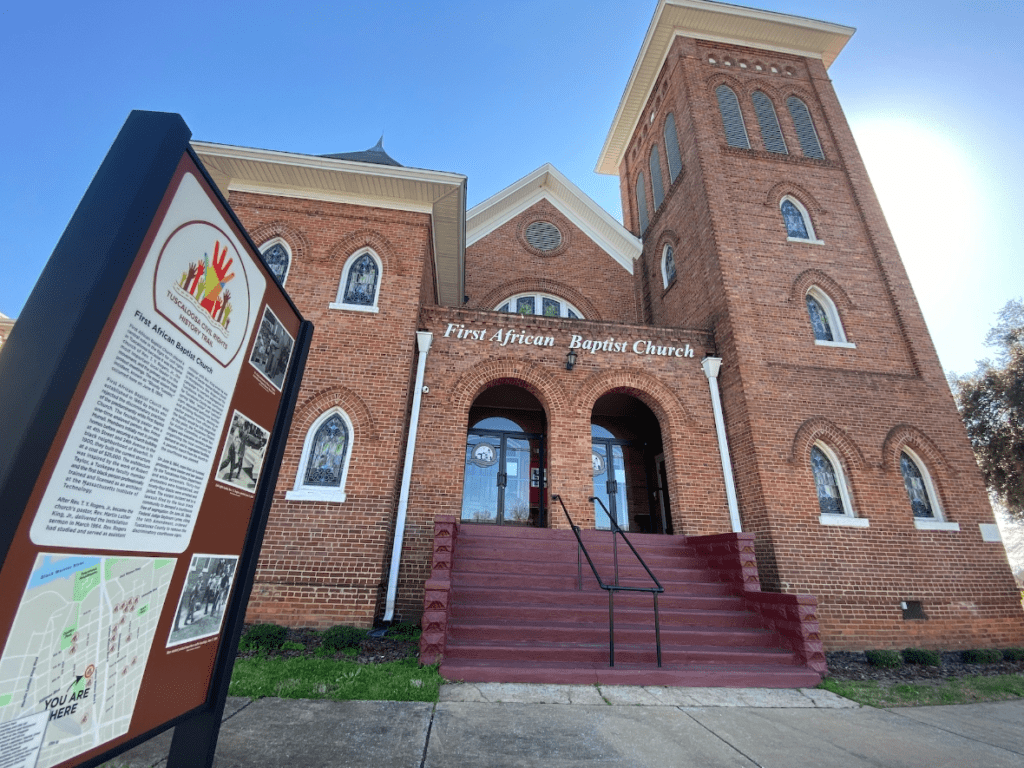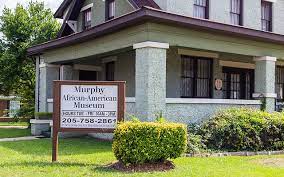Tuscaloosa is not unlike other southern towns that felt the weight of the Civil Rights Movement. The Tuscaloosa Civil Rights Trail encompasses 18 sites from around the city. Even though the trail tells an incredible story in all the sites, here are the 10 spots you can’t miss!
1. The Mob at the Flagpole: Located at the corner of Greensboro and University, this flag pole has always been a place for gatherings. In 1956 when Autherine Lucy attempted to be the first black student at the University of Alabama, students met here to stage protests. Two days after the thousand students protested, the Alabama trustees expelled Lucy because they said they couldn’t protect her. She was snuck off campus amid death treats and the mob won.

2. Woolworth Sit-Ins: popularized in North Carolina in the 1960s, the sit-ins in Tuscaloosa were only done after the protesters tried to get the local businesses to treat African-Americans the same as the white customers. The peaceful protests were often met with arrest, violence, and the dousing of mustard oil on them

3. Kress Building and Bus Boycott: the Druid Bus Company had a stand in front of the Kress Building in Tuscaloosa. Even though federal courts had ruled segregation on public transportation as unconstitutional, a driver forced three African-American students to give up their seats for white riders. The students were arrested and charged with disorderly conduct. The harassment didn’t stop with this incident as a white driver was also charged with shooting an unarmed African-American rider.

4. Alston Building and the KKK: this 7 story building is located at the corner of Greensboro Avenue and 6th Street. Former Alabama governors George and Lurleen Wallace were married here. During the 1960s, Robert Shelton, Imperial Wizard of the Ku Klux Klan, called the building home and directed operations all over the southeast. After Michael Donald was lynched in Mobile, his mother sued the KKK, winning and bankrupting the organization.

5. County Courthouse and Marchers: In 1955, when the courthouse was built, the black community asked for and received assurances that the building would be completely integrated. This was far from the truth! On June 9, 1964 peaceful protesters met at the First African Baptist Church. The march had just started when Tuscaloosa Police Chief William Marble went to arrest Rev. Rogers and other leaders. This started the infamous Bloody Tuesday, where 33 protesters were injured and 94 were jailed. The result of this was a federal lawsuit that forced the courthouse to integrate.

6. Bluefront District: Located at the corner of 23rd Avenue and 7th Street, these black owned businesses opened just after World War II, offering an important opportunities for shoppers who had been denied entrance to the white-owned businesses for their basic needs.

7. Hunter Chapel AME: Founded in the 1850s, this is the oldest African-American church in Tuscaloosa. Referred to as the “father of black education” because it offered the first educational program for children of freed slaves during the Reconstruction Era. It was also the first church in Tuscaloosa to host Dr. Martin Luther King, Jr in 1955.

8. First African Baptist Church: Established in 1866, this church became the focal point of Bloody Tuesday. On June 9, 1966 nearly 600 protesters were beaten and tear gassed here. The rest of this story is mentioned under the courthouse heading.

9. Murphy Collins House: Tuscaloosa’s first black embalmer and mortician hired black contractor George Chopton to build this craftsman bungalow in the early 1920. The bricks and some window sills from the old state Capital were used in the construction of this building. Today, the building houses the Murphy African-American Museum.

10. Howard-Linton Barbershop: this barbershop was not only the central location for all information in the African-American community but was also the center of protests. Autherine Lucy sought refuge here from a crazed crowd and many protestors ran here for safety during Bloody Tuesday. Linton has personal relationships with both President John F. Kennedy, Robert Kennedy, and Dr. Martin Luther King, Jr. who he helped coordinate relief efforts with.

The work done by the Tuscaloosa Civil Rights Trail is simply unmatched and has resulted in one of the best trails you will find the south. The next time you’re in Tuscaloosa, take this tour and get a better understanding of why the city is so strong and great today! Find out more at civilrightstuscaloosa.org


One Response
Good article.